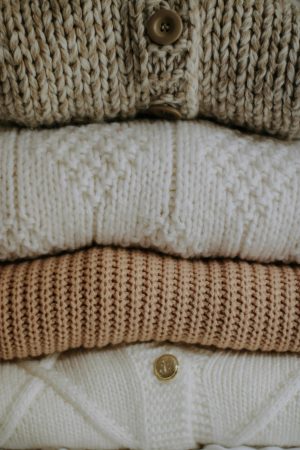You have either battled with fish moths in your home – in kitchen cupboards, in wardrobes, on the bookshelf and perhaps in your bathroom – or, you haven’t seen them in yonks.
Either way, these slivery little insects, that move around a lot like fish do, are considered pests.
We’re looking at how fish moths end up in your home, what damage fish moths do, how to get rid of fish moths, and everything else you might need to know about these prehistoric little pests.
Are fish moths dangerous?
Fish moths do not pose any risks to humans, but they can damage items such as books, wallpapers, and clothing.
Fish moths are especially attracted to items that contain starches – your cottons, linens, and silks are what they would typically go for. They wreak havoc by chewing their way through materials, creating small, irregular holes as they go.

Unsplash / Priscilla Du Preez
What attracts fish moths?
If you are a hoarder of old books, struggle with excess moisture in your home, don’t store food in airtight containers and don’t dispose of cardboard packaging promptly enough, you might find yourself with a fish moth problem.
Fish moths can enter homes through cracks, gaps around windows and doors, and other small openings. They can also be brought in on items such as cardboard boxes, received with most packaged deliveries these days.
Once they’re in your home, fish moths will look for moisture, darkness, and food sources like starches and sugars. They’re often found in bathrooms, kitchens, and other damp areas. Typically, they’re found amongst clothes and old books.
How to get rid of fish moths in clothes
Fish moths are often found in wardrobes, after they have already caused some damage to your clothes.
To repel fish moths from clothes, place cedar blocks or sachets on your wardrobe shelves and and drawers. Cedar does a great job at naturally repelling fish moths and other insects.
For clothing items that you don’t wear frequently, store them in airtight plastic containers or vacuum-sealed bags to avoid landing up with damage.

Pexels / Nati
How to get rid of fish moths in books
If you tend to collect old books, there’s a good chance you may have come across a fish moth scurrying out of the binding of a book, or migrating from the pages of your favourite fiction pile.
To get rid of fish moths in books, sprinkle food-grade diatomaceous along your book shelf. You can also do so along baseboards, and other areas where fish moths are active. The substance dehydrates and kills them.
You can also place silica gel packs between books on your shelf to absorb moisture and keep them dry.
Are silverfish active year-round?
Silverfish can be active year-round, especially in indoor environments where temperature and humidity are relatively stable. They tend to be more active at night and prefer dark, undisturbed areas.
ALSO SEE: 5 BEAUTIFUL BOOK STORAGE IDEAS THAT DOUBLE AS DECOR
Feature image: Unsplash
Article was originally written and published by Savanna Doughlas for Woman&Home.


